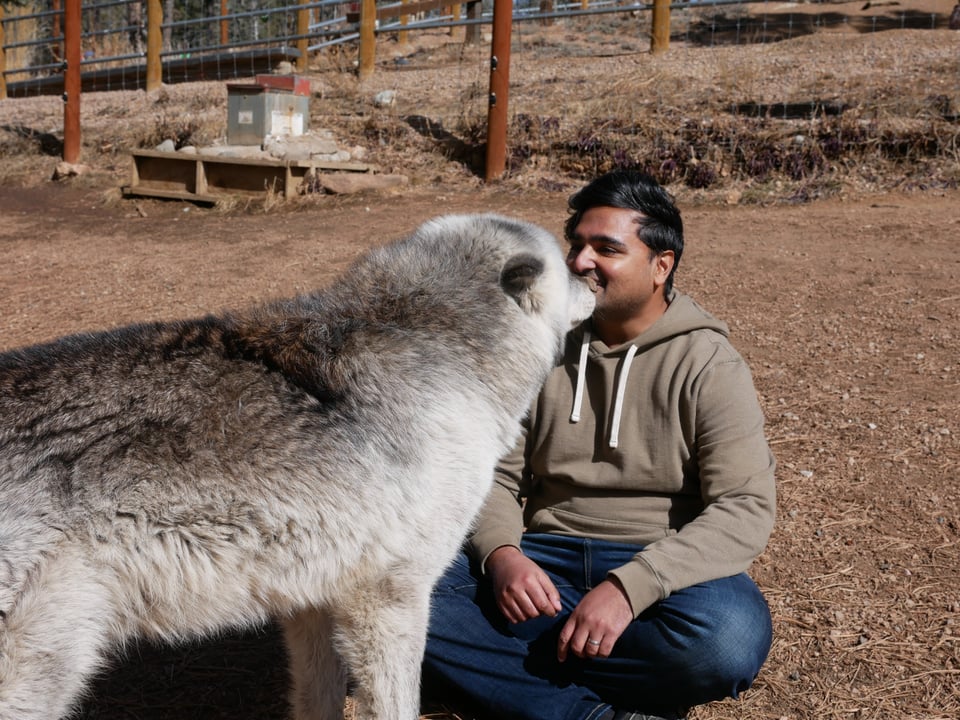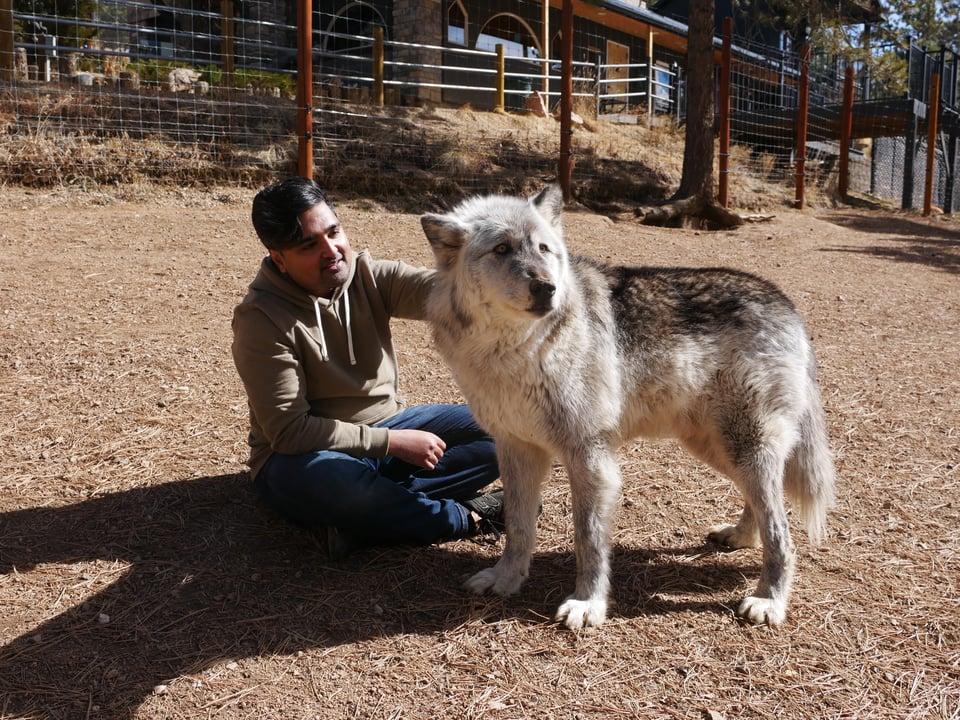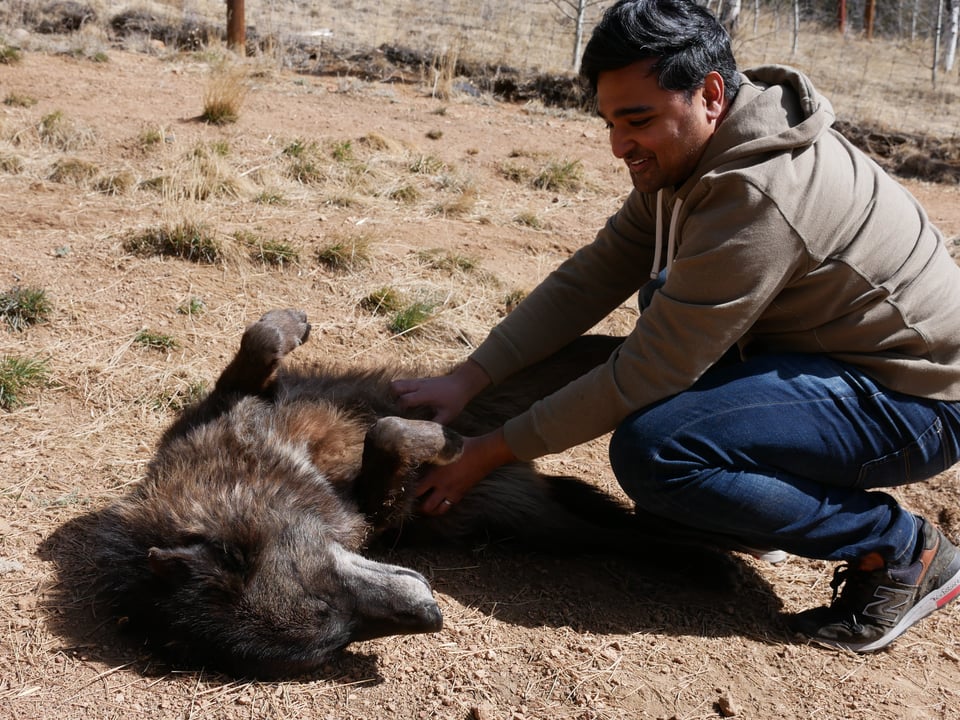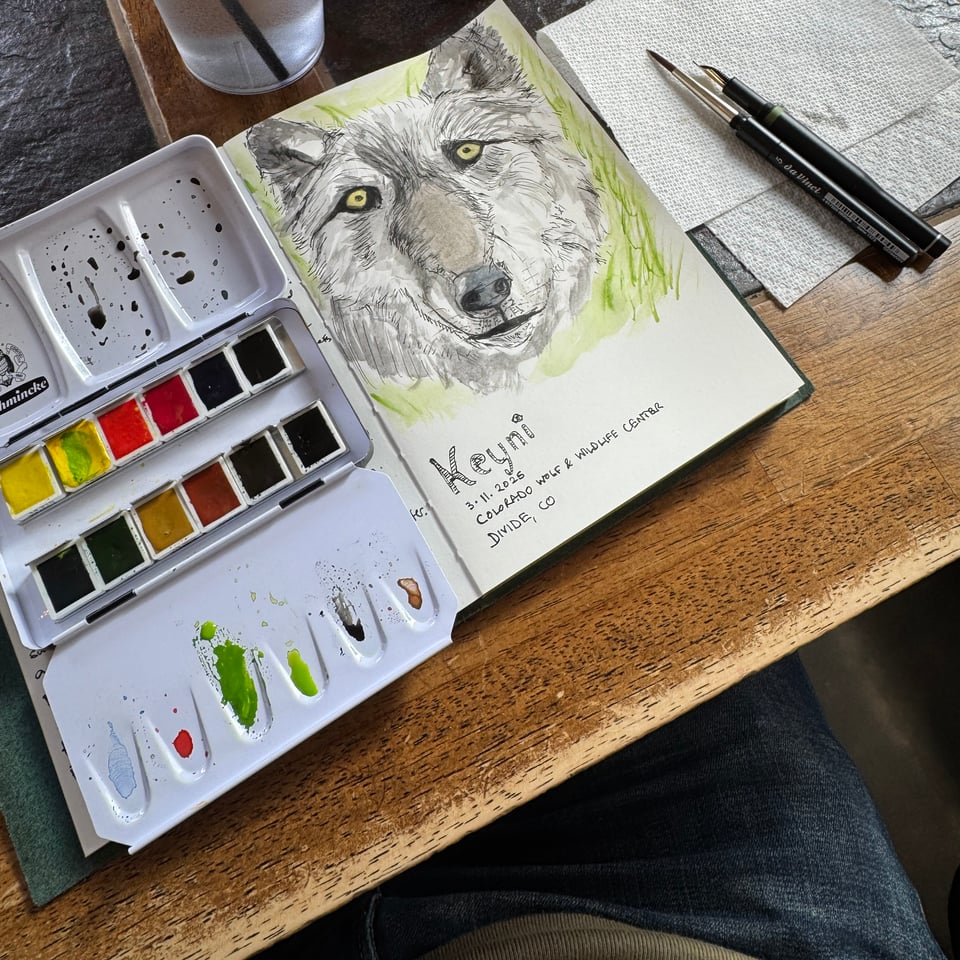142 🦊 I looked a wolf in the eyes

I was eye to eye with a wolf named Keyni. I surrendered to the moment, sensing the kindness in his eyes, which made his immense paws look playful rather than powerful.
I had the chance to meet this majestic wolf when I visited the Colorado Wolf and Wildlife Center, a sanctuary for wolves who cannot return to the wild. The minute I entered his enclosure, Keyni approached without hesitation or fear. Immediately, I felt overwhelmed with emotion. I couldn’t stop smiling.

That wasn't the only warm welcome I received—as I entered the sanctuary, I was greeted by the mesmerizing sound of their howls:

When I showed these to some friends, a few of them were taken aback. “That’s scary! Aren’t wolves dangerous?” one asked. I smiled, and assured them it was perfectly safe.
If there’s one thing you take from this post, let it be this: Wolves pose no threat to humans. A wolf attacking a human is about as rare as a shooting star:
“In Europe and North America we only found evidence for 12 attacks (with 14 victims) of which two (both in North America) were fatal, across a period of 18 years. Considering that there are close to 60,000 wolves in North America and 15,000 in Europe, all sharing space with hundreds of millions of people, it is apparent that the risks associated with a wolf attack are above zero, but far too low to calculate.” —Are wolves dangerous to humans?
The myth that wolves attack people is a blatant lie, perpetrated by the colonists who first came to the Americas. It was then echoed and reinforced in stories, films, and cartoons.
The reality is that humans are a threat to wolves.
In the United States, wolves have been relentlessly killed almost to extermination. Thanks to the anti-wolf messaging that permeated through society, there was little protest to their killing.
Wild wolves are back in America today, thanks to a project that began in the 1990s. The Yellowstone wolf reintroduction project has been written about at length, so I won’t go into it too much, other than to say it was an incredibly successful effort. (You can read a quick timeline of the progress on this page from Greater Yellowstone.) The removal of the top predator (wolves in this case) caused elk to overgraze, causing a ripple effect on the ecosystem. By restoring wolves, the ecosystem was brought back into balance.
The Yellowstone reintroduction project has definitively proven the positive value of restoring wolves into our ecosystems.
In hopes of following the successful model of Yellowstone, there are now reintroduction efforts going on in Washington, Oregon, Colorado, and California.


During my visit to the Colorado Wolf and Wildlife Center, I was able to learn a lot more about the reintroduction efforts in Colorado and beyond. I really appreciated how transparent they were not just about the current state of things, but the ugly history of America’s assault on wolves.
I noticed there were young children present at the educational tour, and yet the guides did not hesitate to tell the truth about wolf killings, traps, and even torture incidents. They didn’t hold back. I really liked that—when we lie to our children about the failures of our past, we prevent them from learning, and enable them to repeat the same mistakes.
Wolves are beautiful, intelligent, and surprisingly human-like in nature. They live in packs similar to families, with an alpha male and female leading the group. Wolves mate for life, typically staying together for their entire lives.
They deserve our love and respect. At a bare minimum, they deserve to be safe from our destruction.
If you’d like to learn more about wolves, check out my note on wolves, where I share tons of books and documentaries on wolf history and reintroductions. Start with The Snow Wolf (available for free on YouTube), a beautiful and moving fictional documentary following the journey of a female wolf who loses her mate, and must find a way to raise her family.
And if these magnificent creatures move you as they moved me, please consider taking action to help them. Wolves in America need our help now more than ever. On top of the current government’s catastrophic assault on the National Parks, representatives are trying to pass legislation that mirrors wolf exterminations of the past.
Two actions you can take to save the wolves:
Support Colorado Wolf and Wildlife Center — Hopefully from this post, you got a taste of the magic of their wildlife sanctuary. But their work goes much further—they advocate for wildlife, educate the public, and help push forward crucial conservation efforts.
Tell Congress to vote NO on HR-845 which aims to delist gray wolves. Rep. Lauren Boebart’s misleadingly named “Pets and Livestock Protection Act” would remove wolves from the endangered species list – a move that would be catastrophic to their survival.
Support efforts to veto Montana’s HB-554. Representatives in Montana are attempting to introduce several bills that could cut wolf populations in half, or worse.

At times like this, with so many efforts to destroy what is good about our world, things can seem totally hopeless. But there is always hope, as long as those who care are willing to preserve what matters.
Let us take inspiration from this LA Times article published back on October 11th, 1992, Gray Wolf May Again Roam Yellowstone. In it, we hear from Renee Askins, who created a Wolf Fund to try and restore wolves to Yellowstone:
Asked how she will feel when she lets loose a howl in Yellowstone–a place she fell in love with at first sight–and a wolf answers, the normally articulate, lively Askins grew pensive. “I’ll feel like this place I love is right and whole,” she said after a long pause. “What could be a greater gift than a place like that?”
Thank you Renee, for fighting for the wolves. They went on to howl free, for many years, thanks to folks like you.
Now, it’s our turn. We must do the work to keep our wolves howling, our bison roaming, our flowers blooming.
Let us speak up, and let us be loud.
We must speak not only for ourselves, but also for those creatures who have no voice of their own.
A friend and I visited the Colorado Wolf and Wildlife Center during a road trip in 2023. They do amazing work. Other places I can recommend: Mission Wolf Sanctuary, also in Colorado, and Predators of the Heart in Anacortes, Washington.
Thank you for sharing these important stories!
Thanks so much Cheryl! I'm definitely going to add those to my list 😊